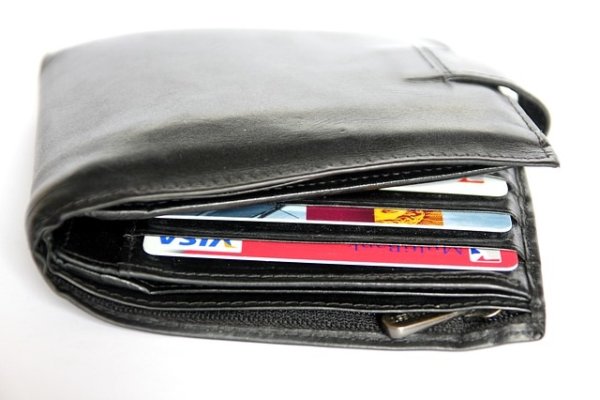Protect Yourself from Identity Theft

Here at Emergency Plan Guide we usually focus on disasters that impact whole communities: wildfires, floods, earthquakes, power outages. We want your community to be better prepared and better able to respond when something bad happens. This week, though, we want to consider a personal financial emergency – identity theft.
Let’s take a look at identity theft, scams and fraud.
We want to share some of what we learned from our local police department last week on the topic of identity theft. Over 70 people showed up to hear the presentation and they had stories to tell, too. And of course I have added some details pulled from online sources. Buckle your seat belt!
Did you know these facts about identity theft and fraud?
- The Federal Trade Commission (FTC) reports that over $1.48 BILLION was lost to fraud in 2018 – up nearly 40% from 2017.
- The biggest losses were to impostor scams, debt collection and identity theft. Interestingly enough, younger people reported losing money more often than older people!
- Scammers prefer to get money via wire transfer, but they also like their victims to “pay” them using gift cards: Target, Walmart, and drug stores.
- Credit card fraud – someone opening a new card in your name and then using it to the maximum – was up 24%. And it’s not just credit cards that are threatened. The 2019 study from Javelin Strategy and Research reported that “criminals are beginning to focus their attention on different financial accounts such as loyalty and rewards programs and retirement accounts.”
- While fraud transactions on existing credit card accounts have gone down, particularly since the introduction of embedded chip technology, hackers are now increasingly able to open new accounts on mobile phones!
What resulted in the biggest financial losses last year? Romance scams!
I was surprised by this statement. Probably I shouldn’t have been. Apparently as many as 1 out of 10 romance profiles online are fake.
And when I looked into the subject more deeply, I discovered the stories of hundreds and hundreds of people tricked this way – into romantic relationships and often into marriage. Their stories are heartbreaking – and their losses devastating.
I found this book about the subject. If you think you or a loved one is being drawn into an unhealthy relationship, find out more before it’s too late

The most common concern of the people in our senior audience?
Phone calls from impostors pretending to be from government agencies – Social Security, IRS, and Medicare. Nearly everyone in the room raised a hand when the question was posed about these calls! (The police politely refrained from asking for a show of hands for who had actually fallen for the scam.)
Our crime prevention officers said it very clearly:
The government does not make phone calls to request money. Hang up the moment you hear any threatening language or urgent appeal from what sounds like an “official” phone call.
How can we protect ourselves from these scams?
The Federal Trade Commission is the nation’s consumer protection agency. If you have a complaint about fraud, misleading advertising, businesses that don’t deliver what they promised, go to the FTC website and register it. I found a lot of interesting and up to date info there including posts on
- Scams and the older consumer
- What the government is doing about robocalls (and what you can do to limit them)
- Special info for military consumers, who lose 44% more than the general population to fraud
Other recommendations for protecting yourself against identity theft:
- Keep the inside of your car as clean as if it were brand new! Nothing visible!
- Use a purse with a cross-body strap; don’t place it in a shopping cart.
- Carry just what you need in the way of ID and/or credit cards. If you lose them, it’s a lot easier to track down just a couple of things instead of a whole collection!
- Use credit cards instead of debit cards. Credit cards typically have purchase or theft protection that debit cards don’t.
And from Joe and me, some final thoughts based on our own experiences:
- If you buy anything online – particularly if it’s a trial offer – READ THE FINE PRINT! Many magazines, for example, are inexpensive when you first order, but they will be automatically renewed at full price at the end of the trial subscription.
- Money back guarantees are great – but again, read the fine print. This feature may expire within just a few days, and then you are stuck with an item you really didn’t want.
- Review your bank statements carefully and get a free credit report each year. This is the only way to discover that your identity may have been stolen! ATTENTION: “Free” credit reports aren’t. The only legitimate free service that contains all three major credit reporting agency reports is available at www.annualcreditreport.com.
By now you should have seen enough movies or read enough crime novels to know that thieves (and police, for that matter) routinely search trash for identitying names, addresses and account numbers.
Shred ALL financial documents that you don’t want, in particular offers for new credit cards, insurance, etc. If you don’t have a shredder, or don’t have room for one,
Finally, consider a theft prevention stamp!
This gadget rolls over paper mail, covering addresses and personal data with a specially designed patented pattern that masks the writing underneath. Easy to use, convenient, makes a great gift for a kid off to school or for an elderly parent.
Click on the images or links below to go to Amazon (where we are Associates). You’ll find a number of different styles and sizes of ID protection stamps, ranging in price from around $7 to $30.


Note: A while back I saw ads for what were called “RFID blocking wallets.” These purported to protect your credit cards from being “scanned and read” by thieves carrying special readers. From what I can now tell, these are useless and may well be a scam, themselves.
And one last suggestion to consider – an identity protection subscription program.
The most well-known of these personal protection programs is probably LifeLock. As you can imagine, there are many competitors offered by private companies and even retailers like Costco.
You pay monthly for the service – anywhere from around $10 to as much as $30. Most are around $20. Look for features such as Dark Web monitoring, mobile apps to protect against phishing, credit monitoring, bank account and credit card alerts, Social Security alerts, tax refund alerts, and reimbursement for funds stolen.
I hope all this is familiar to you, but it’s worth a review. A number of people came up to me after the meeting and said how good it had been. You may want to ask YOUR local law enforcement agency to come to YOUR next group meeting and give their own presentation!
That’s it for now. Stay safe out there.
Virginia
Your Emergency Plan Guide team
P.S. As always, bringing in a “guest expert” is often a lot more effective than putting on a meeting yourself. Lots of suggestions in our book on Emergency Preparedness Meeting Ideas. Still our best seller!






